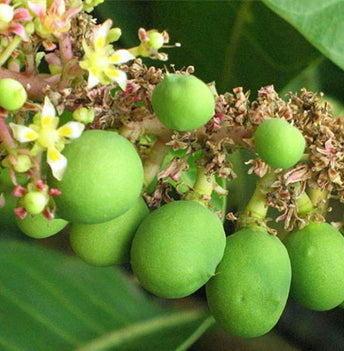
Mango Day
Share
The mango is an edible stone fruit of which there are about five hundred varieties. There are in the same biological family as the cashew and the pistachio. There are tens of millions of tons grown and consumed annually of this popular fruit that has origins in the sub-continent. The ancient Jain goddess Ambika is said to have a special affinity for the fruit, as she is often portrayed sitting under the mango tree.

The benefits of this produce have been known to man for over five thousand years. The mango has been exported to South and Central America, Bangladesh and North Africa, this helped disseminate these delicious cultivars to the rest of the world. Most of today's production comes from India and China. The 'Alphonso' and the 'Tommy Atkins' varieties are the most requested.

The mango also provides many culinary delights. Used in many types of recipes including Bengali and Filipino cuisines. It is often found in juice and smoothie drinks as well as several cakes and ice desserts. Mango also come in dried and powdered form. The constituents of the fruit are simple; they are 84% water, 15% carbohydrates and 1% protein and are an excellent source of vitamin C and folic acid.
The pervasive nature of this food has admitted it to the pantheon of popularity. The mango enjoys special rank in both India and Bangladesh as national fruit. Several countries have elevated the mango to festival status, including Canada, Jamaica, the Philippines and the USA.

My suggestion on this day is to buy a bunch of mangoes and try a few recipes that would commemorate the event. Personally, I am going to indulge myself with a few pinches of this delicious mango snuff from F.U.B.A.R. Be sure and try some mentholated as well and happy snuffing.
